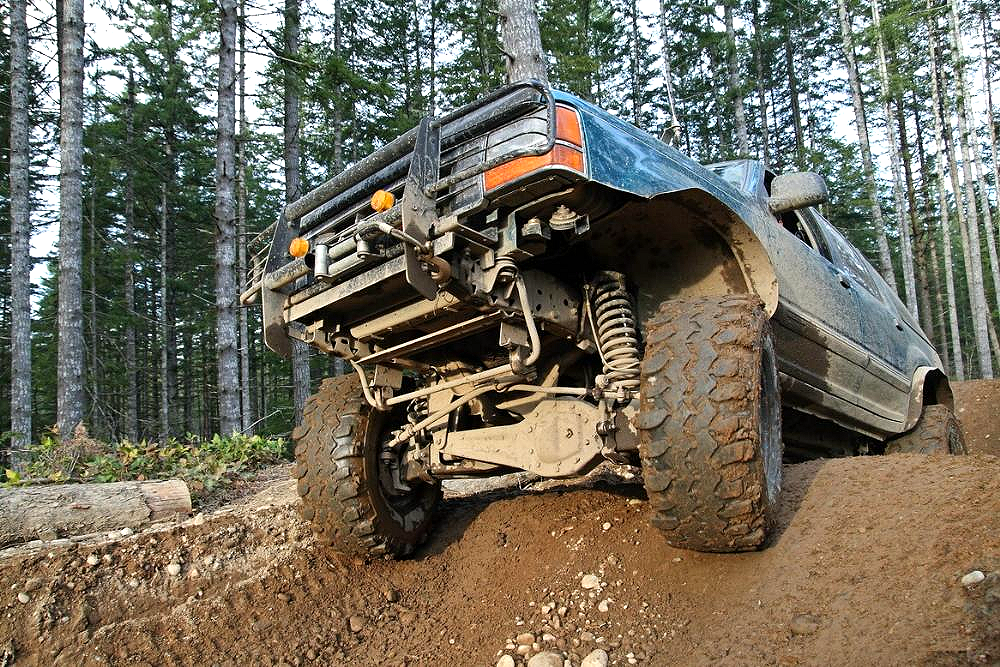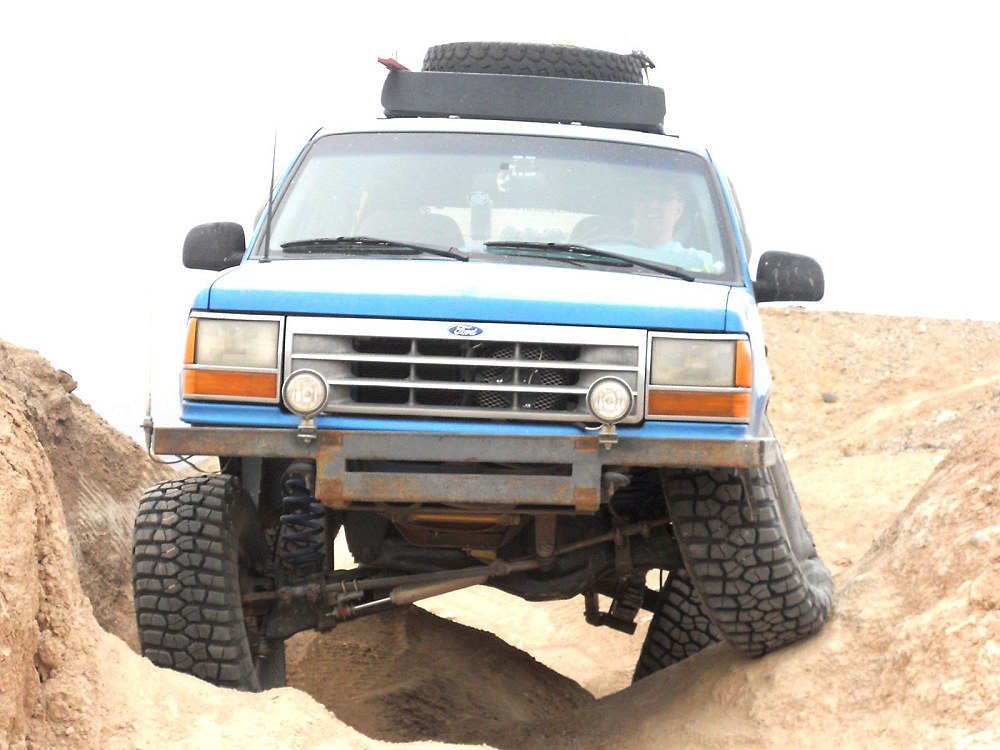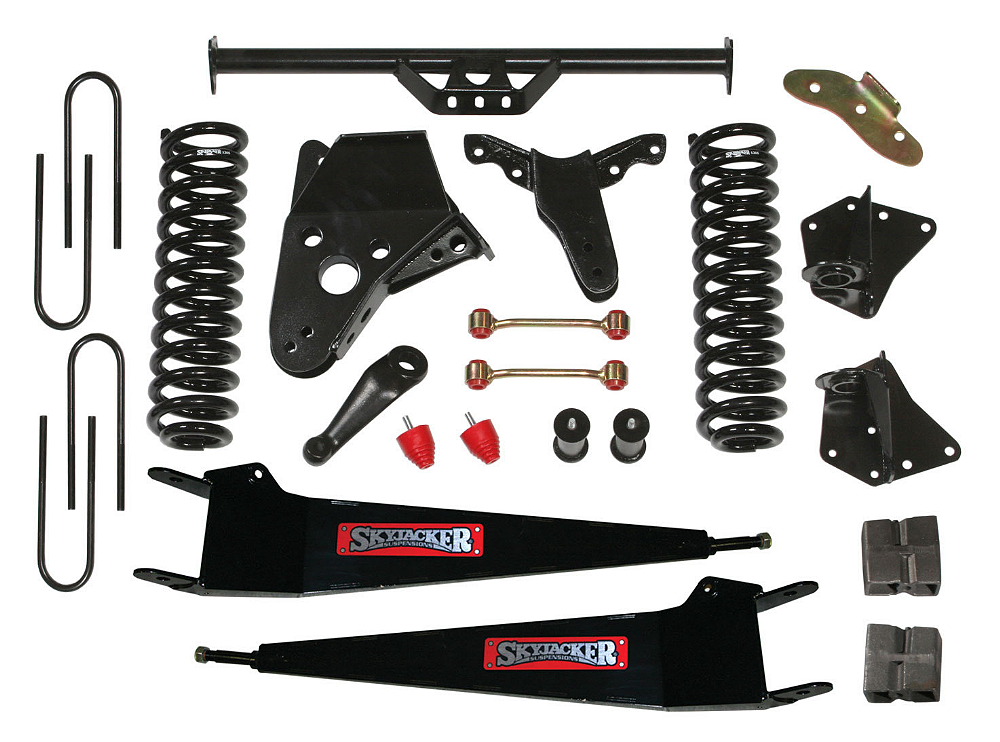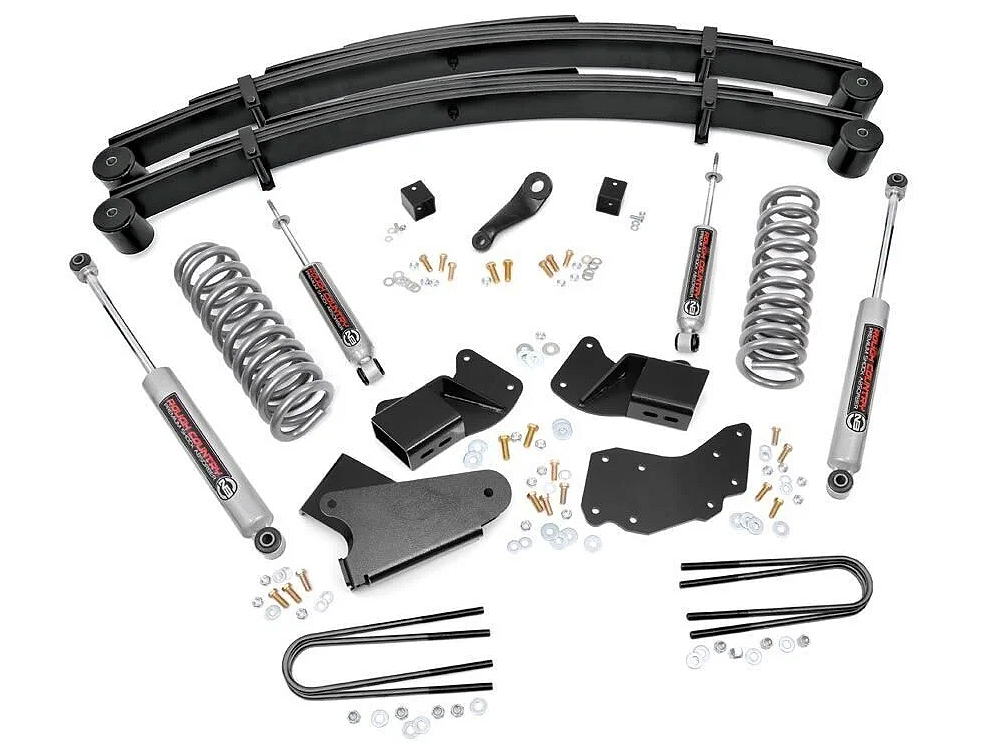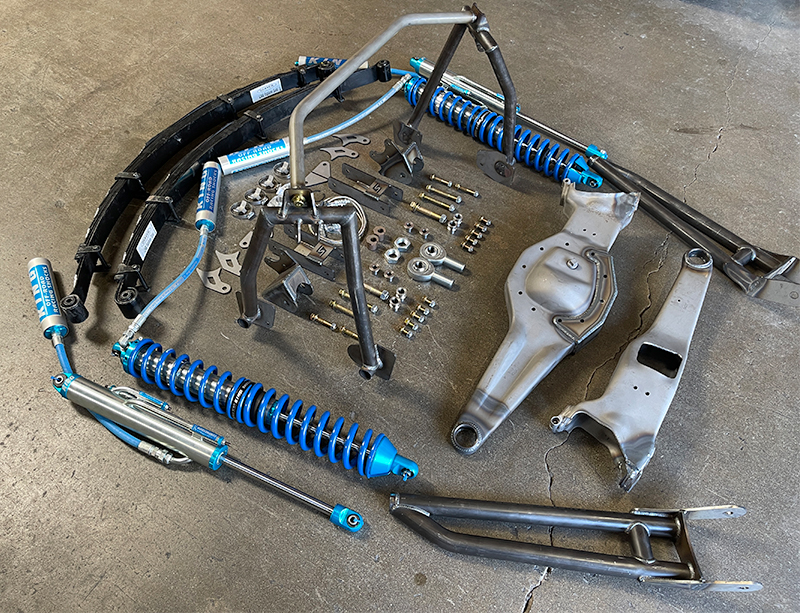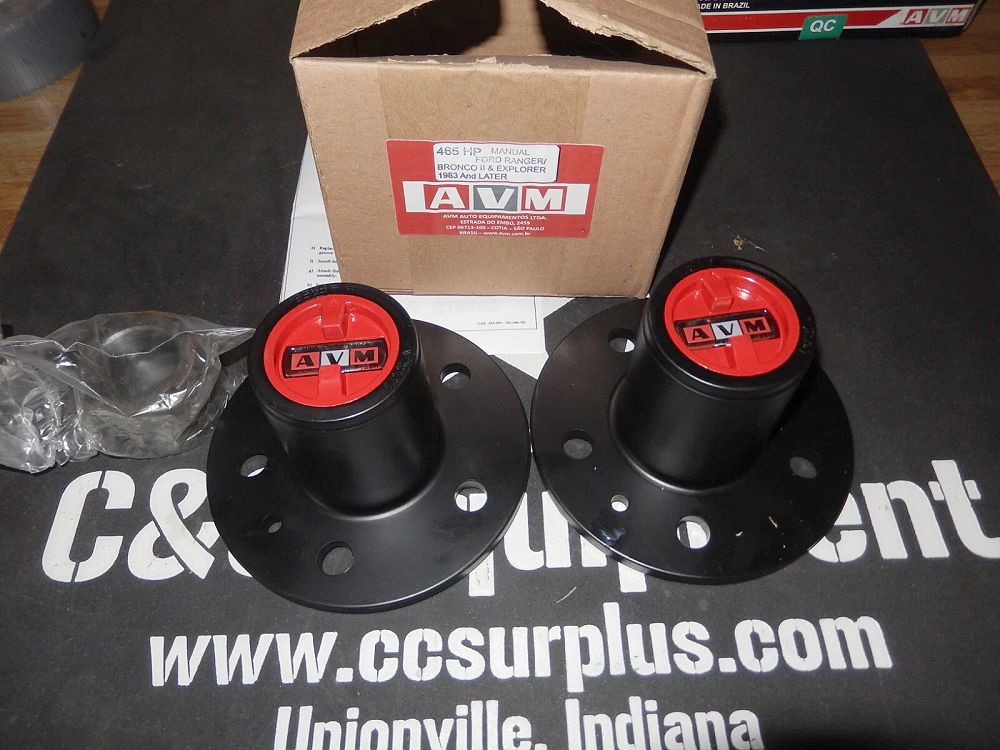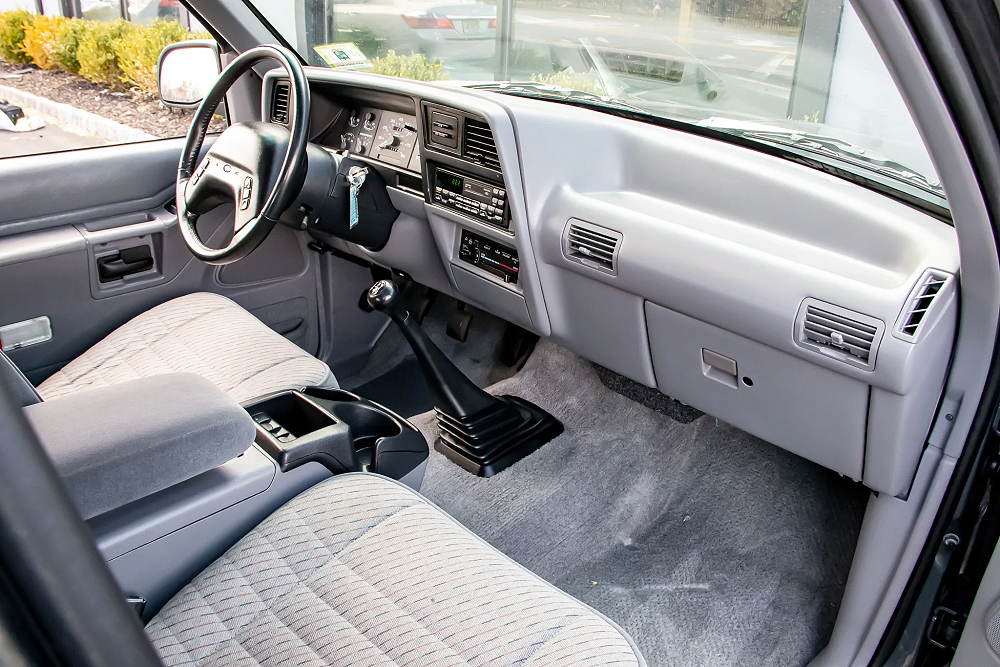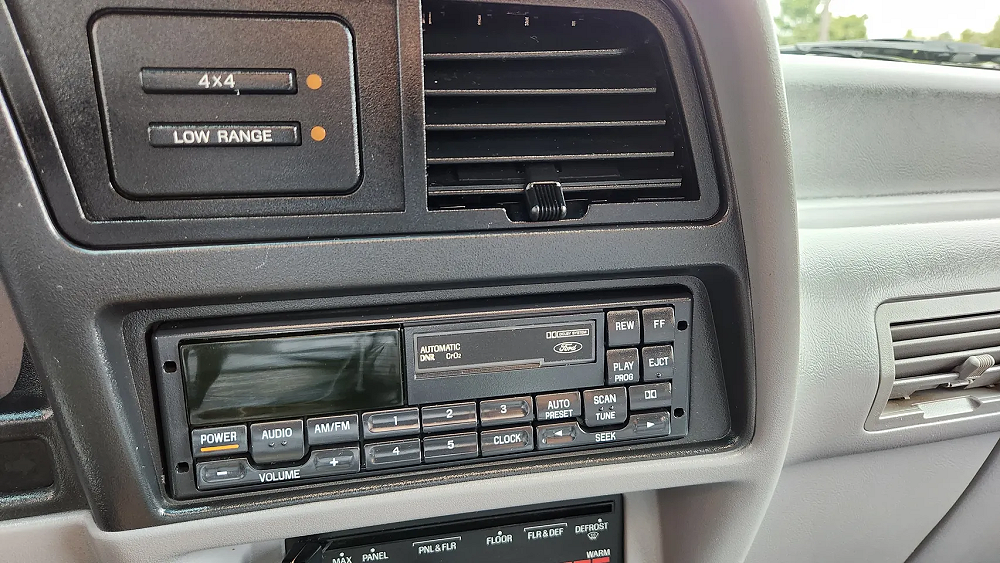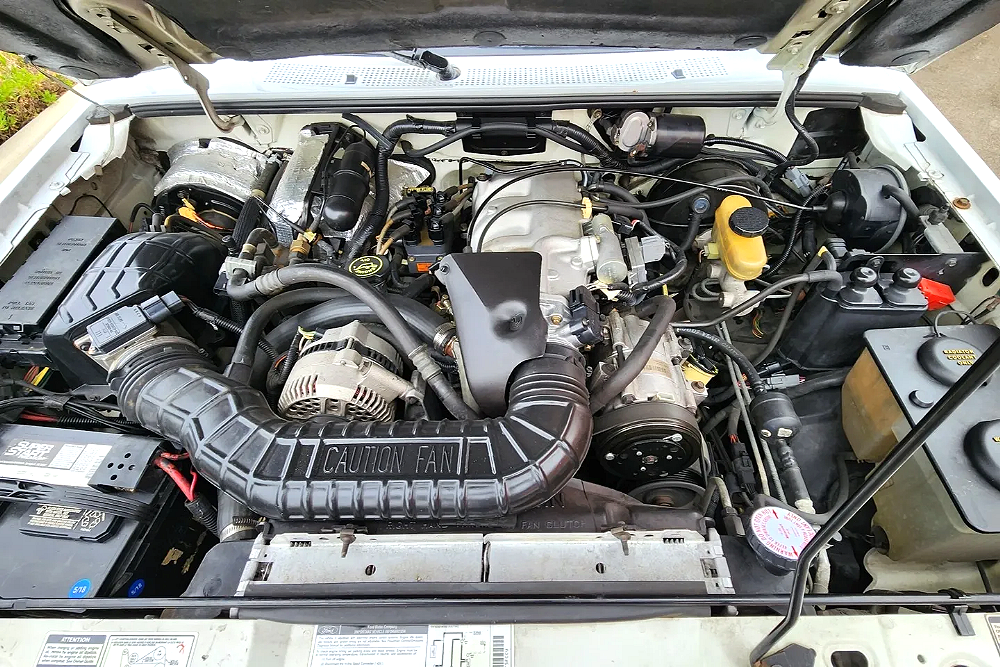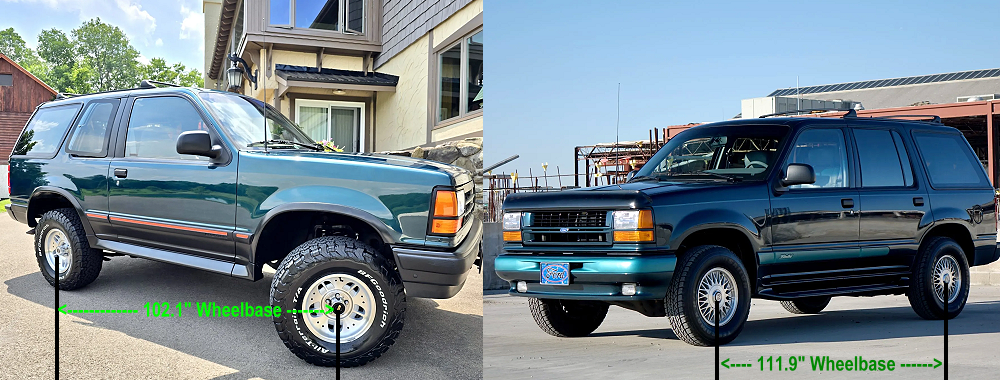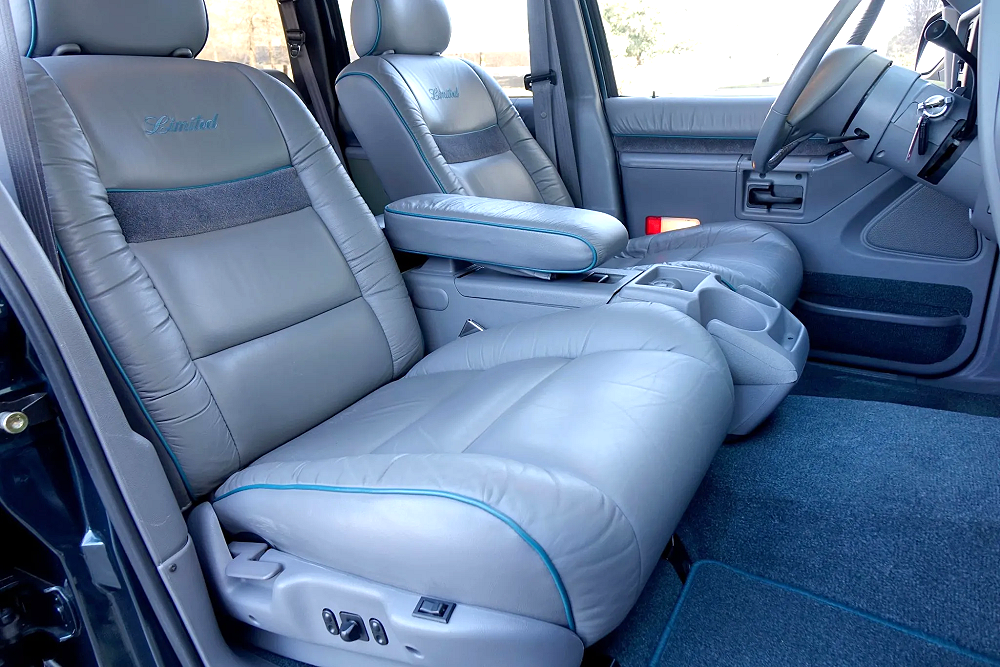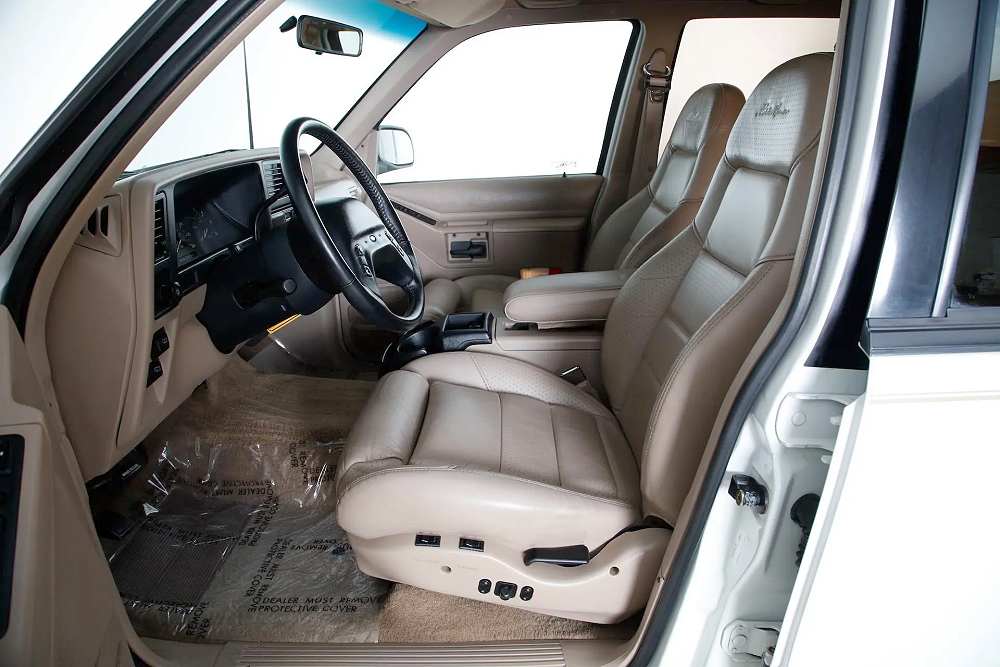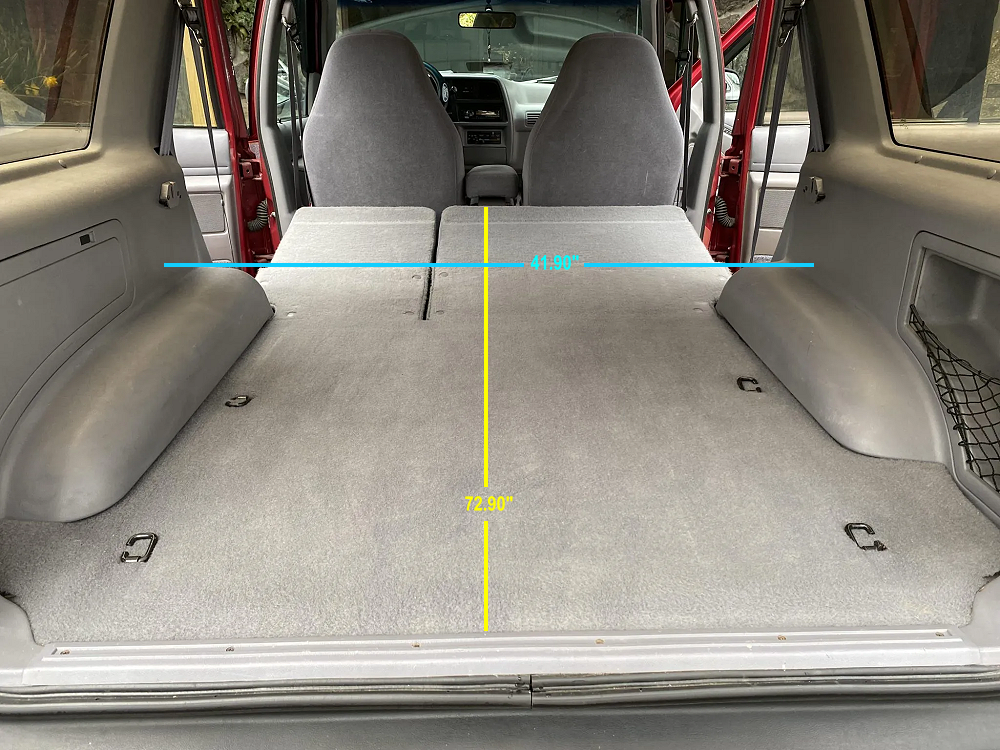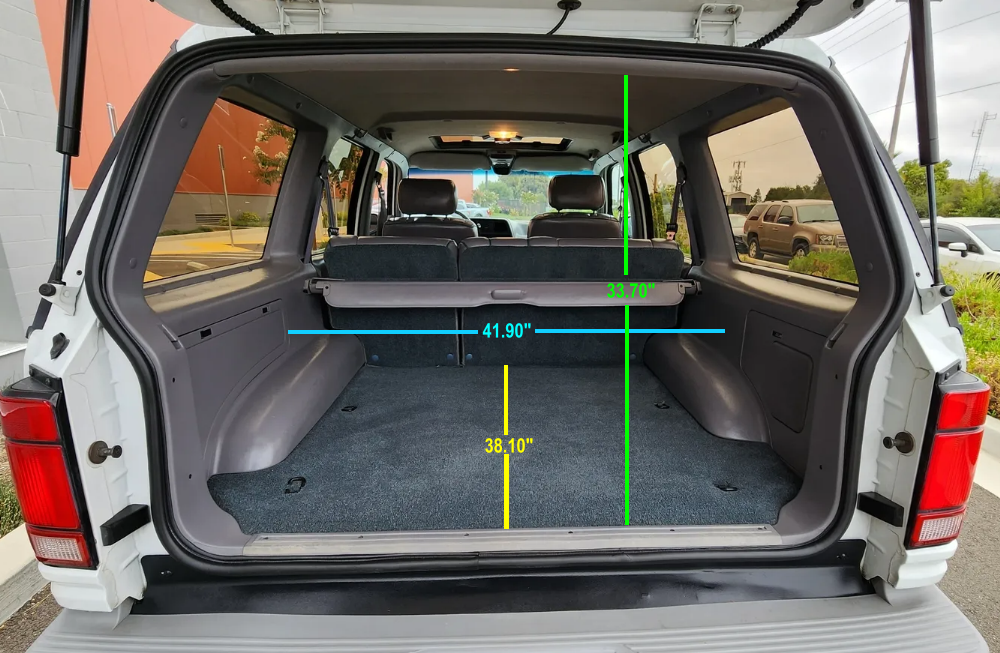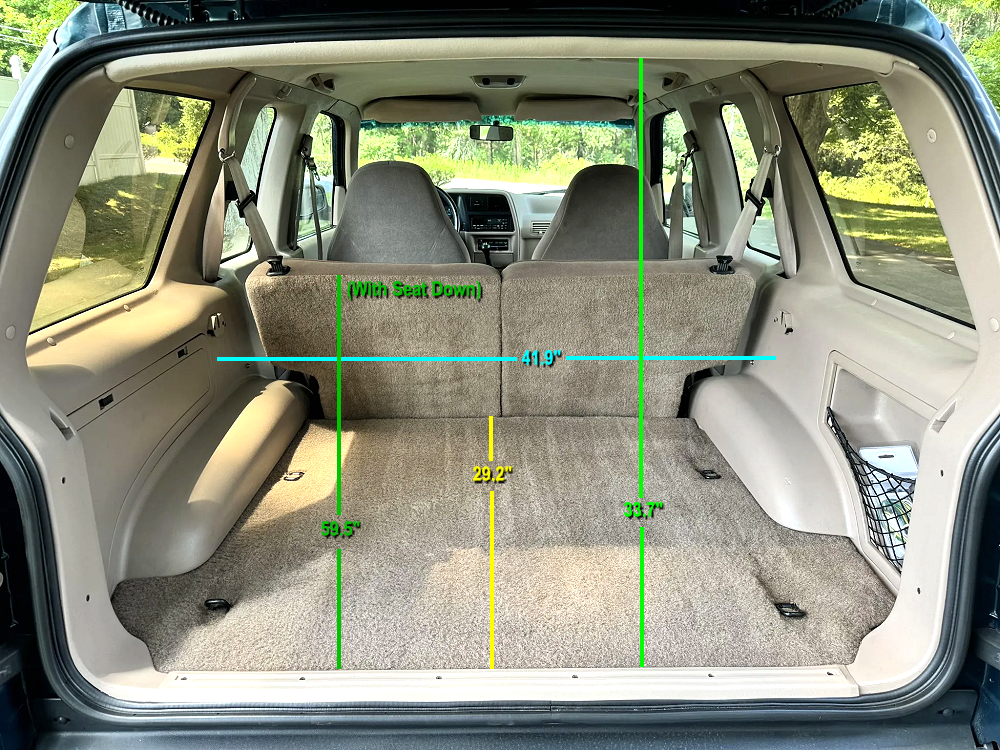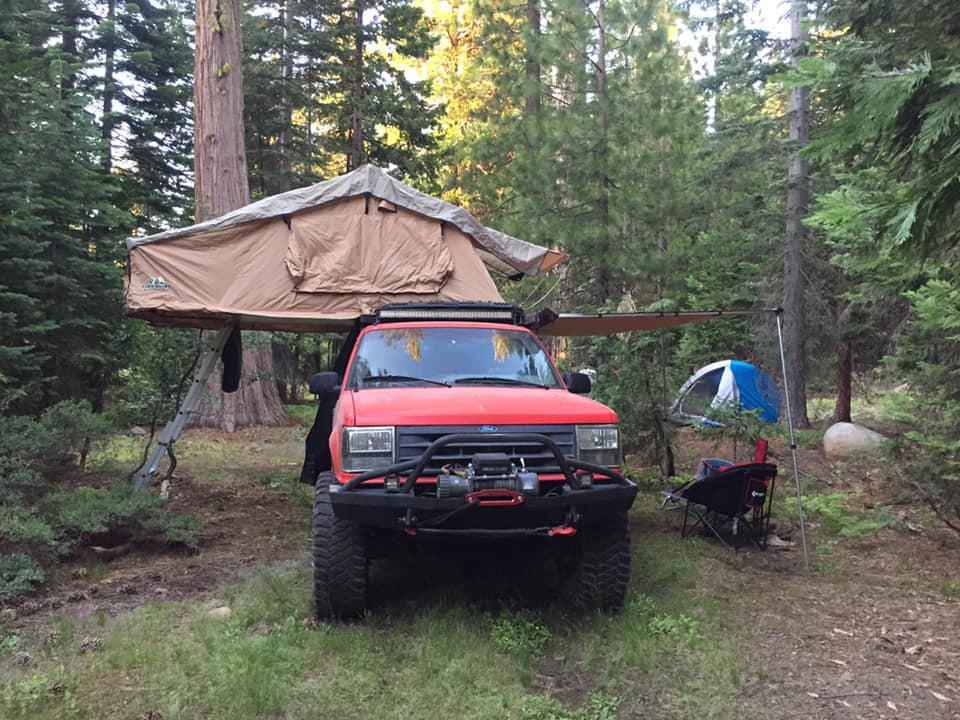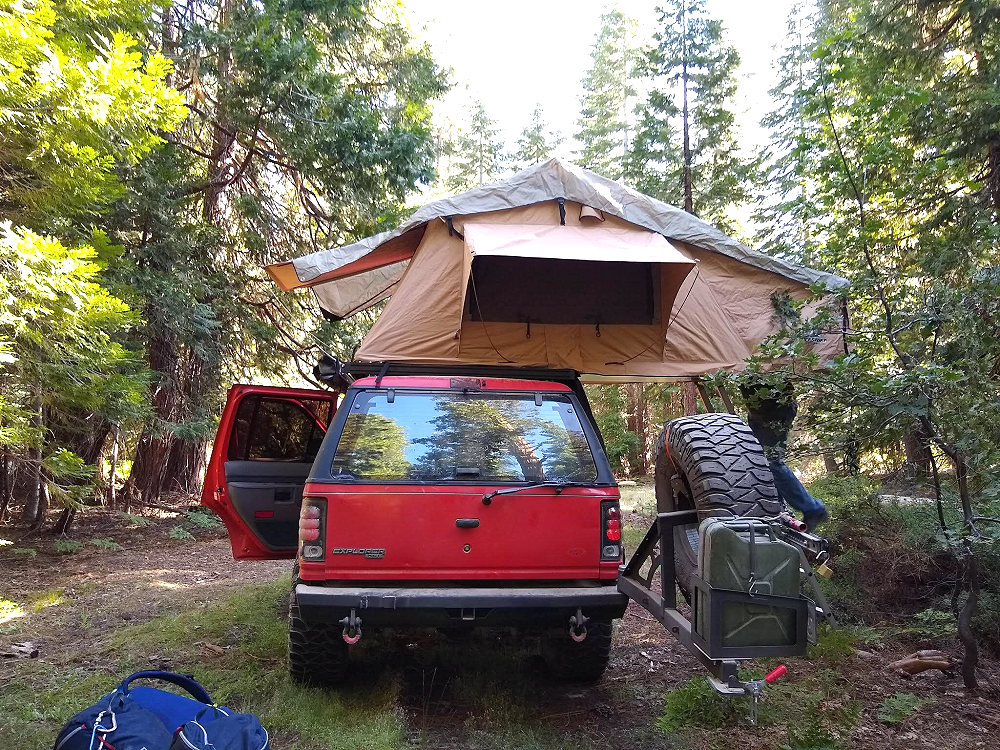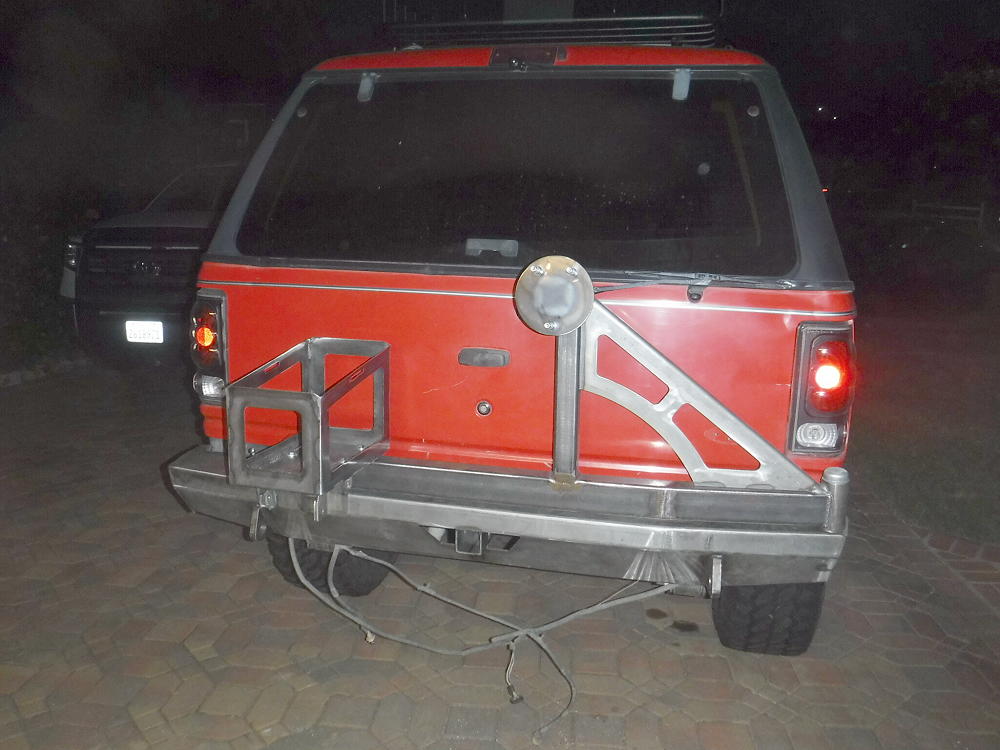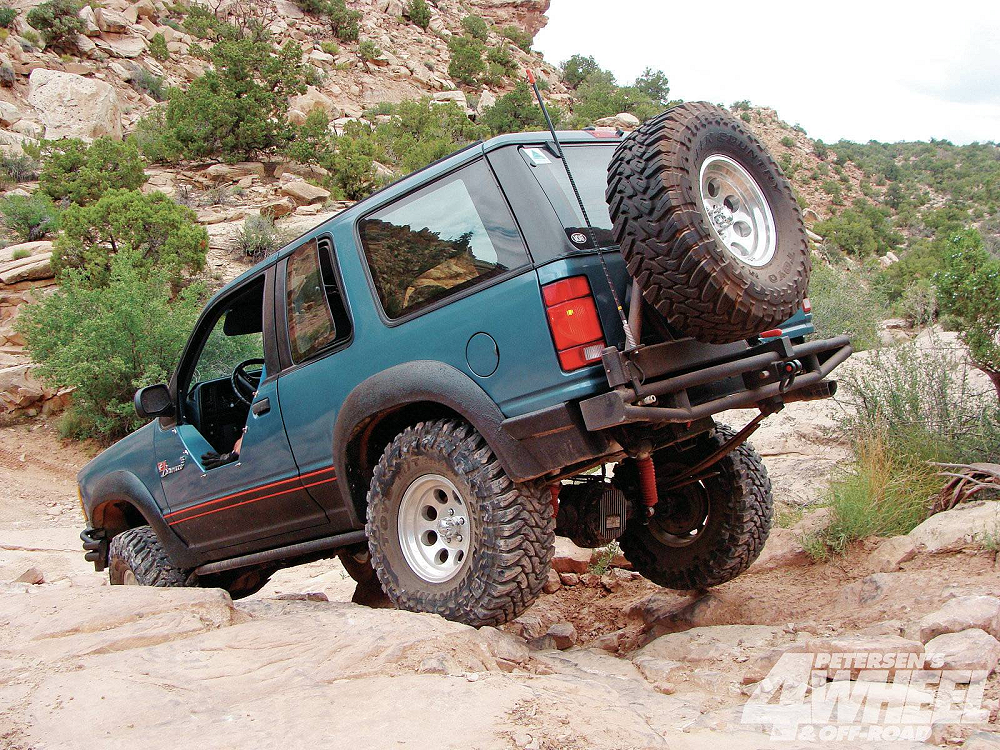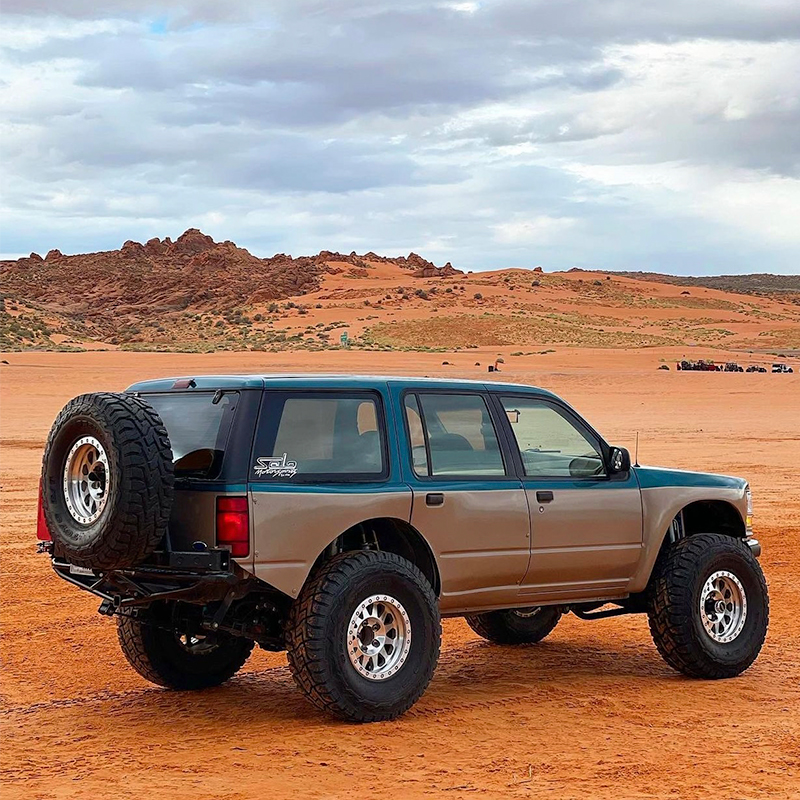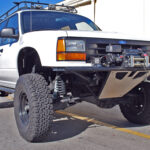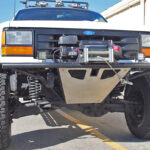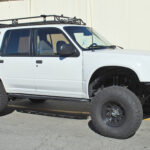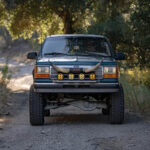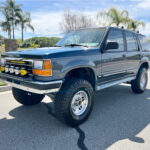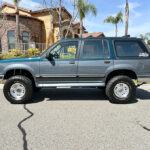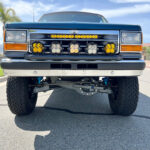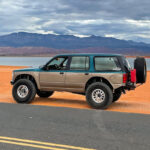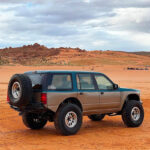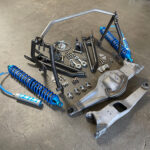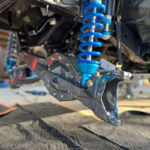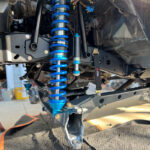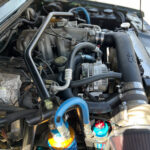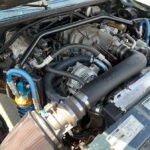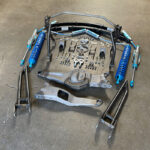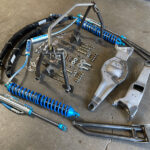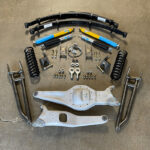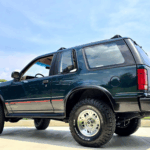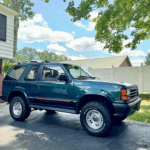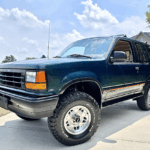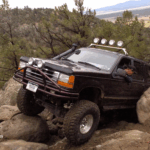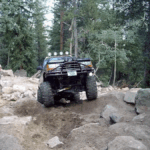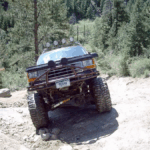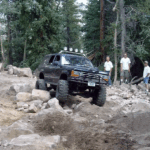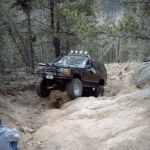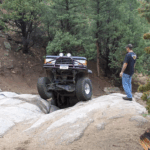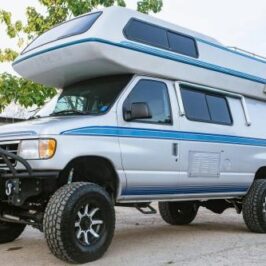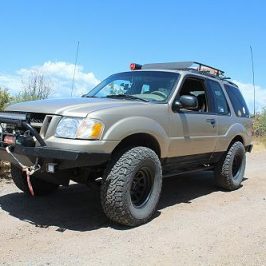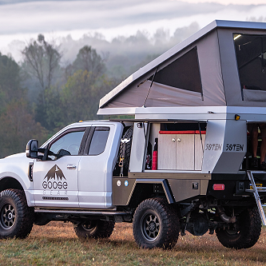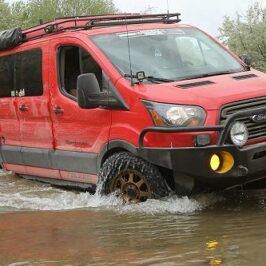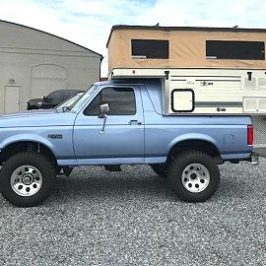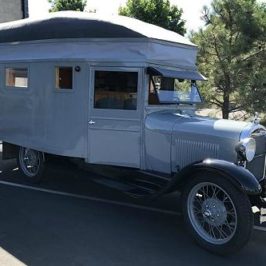I feel that the 1991-1994 Ford Explorer 4×4 is one of the most capable and overlook adventure vehicles ever built by Ford. These Sport Utility Vehicles were the replacement for the Bronco II. Ford eventually moved away from the 2-door Bronco and Bronco II to a 4-door Expedition and the 4-door Explorer, but the Explorer also offered a 2-door option as well as a 5-speed manual transmission. But let’s take a deeper look at what was so great about these vehicles.
1991-1994 Ford Explorer Quick Facts
- 4.0L OHV V-6 160-horsepower
- 4-speed auto or 5-speed manual
- TTB front suspension with high-pinion Dana 35 differential
- Leaf spring rear with Ford 8.8 differential
- 32.6˚ approach angle (4-door)
- 22.3˚ departure angle (4-door)
- 15/19 mpg (automatic transmission)
- 19.3-gal fuel capacity (4-door)
- 34.2-ft turning radius (4-door)
Twin Traction Beam Front Suspension (TTB)
The 1991-1994 Ford Explorer came with a Dana 35 TTB front axle. The TTBs independent front axle beams along with extended radius arms, longer coil springs, shocks, brake lines and disconnected sway bars enable the front suspension to be capable of 19-inches of wheel travel. This setup has been preferred by desert racers and prerunners for their ability to maintain contact with the ground and absorb the whoops. I’ve even seen people adopt the TTB suspension to other vehicles.
Unfortunately, the shorter upper and lower control arms used on today’s automobiles don’t offer very much wheel travel and aren’t capable of achieving as much wheel travel as the TTB suspension.
Why is wheel travel so important? As you go over uneven terrain you want all four tires to maintain contact with the ground. If you’re tires aren’t touching the ground, they’re not going to be able to propel you forward.
Suspension Kits
There are fewer aftermarket suspension kits available for the 1991-1994 Ford Explorer these days. The best bolt on kits you could get were the Superlift and Skyjacker kits with extended radius arms. Superlift doesn’t offer the kits anymore, but you might find some used kits out there.
Skyjacker doesn’t offer a kit anymore either, but here’s the thing, the front suspension is the same as used on the same year Ford Ranger. So, you could get a Skyjacker suspension kit and mount most of it on the Explorer. The big difference is that the rear leaf springs mount under the axle on an Explorer and above the axle on the Ranger. Below is a photo of a Skyjacker kit for a Ford Ranger.
Rough Country still offers a bolt on kit for the 1991-1994 Ford Explorer, but I’ve never been a fan of their Ranger / Explorer TTB kits because their axle drop bracket isn’t gusseted and beefy as the Skyjacker bracket. I also don’t like that the mounting bracket for the passenger side axle beam is a flat plate that lowers the factory bracket instead of a beefy new bracket. By lowering the stock bracket, it also puts it in a location that could cause it to hit the top of the differential if you don’t have a good bump stop.
If you really want to get serious about your suspension, you’ll want to contact Solo Motorsports. Solo makes a few different options that range from coil springs to coil overs along with longer radius arms and modified and braced axle beams.
The Dana 35 TTB Front Axle
The Dana 35 TTB has a 7.5-inch ring gear, 1.36″ axle shafts, and 5-760 U-joints.
For comparison, the Dana 44 TTB has an 8.5-inch ring gear, 1.37″ axle shafts, and 5-760 U-joints.
People have this idea that the first thing you should do is replace the TTB front axle with a Dana 44 live (solid) axle, but I don’t agree. As you can see above, the Dana 35 basically uses the same size axle shafts, the ring and pinion is just 1-inch smaller in diameter. And unless you’re going to run 38+ inch tires, you don’t need a larger ring and pinion.
Some people like the Dana 44 spindle because it has a wide wheel bearing spacing than the Dana 35. They also feel like the Dana 44 has a stronger locking hub. However, the newer manual locking hubs for the Dana 35 are made of steel and much heavier and stronger than the original hubs.
If you really want to beef up the Dana 35 you can swap out the steering knuckles with those from a Dana 44, and then use a Dana 44 outer stub shaft, spindle, locking hub, and larger disk brake.
Check out “Beefing Up The Dana 35 TTB”
Locking Hubs
Most Ford Explorers came with an automatic locking hub. With automatic hubs, there is no need to stop or get out of the vehicle to lock them in. The spring-loaded hub automatically engages on the fly when the transfer case is shifted from 2WD into 4WD. The application of torque to the axle causes the splined collar inside the hub to slide on to the axles splined stub shaft and lock. Sometimes the hubs will click and grind and make ratcheting noises instead of engaging. It could be because they’re dirty or someone packed grease inside the hub. Don’t put grease in them. Just lubricate them with a little ATF. They may also simply be worn out. I’m not aware of anyone that makes an aftermarket automatic locking hub.
The newer manual hubs on the market today are stronger than the old cast alloy hubs. I would suggest the AVM 465 XP Dana 35 Extreme Performance Manual Locking Hubs which are all steel and not cast alloy. There are other hubs out there such as Mile Marker if you can’t find the AVM’s, but I’d look for those first. Warn no longer makes manual hubs for the Dana 35.
Ford 8.8-Inch Rear Axle
The 1991-1994 Ford Explorer comes with a Ford 8.8-inch rear axle that features an 8.8-inch diameter ring gear and 31-spline axle shafts. The 1991-1994 Ford Explorer did not come with rear disc brakes. Those were introduced on the 1995 models.
These axles are stout enough that they were also used in the Ford F-150. These differentials came with either an open differential or Trac-Lok limited slip.
The Ford 8.8-inch used in the Explorer came with either a 3.08, 3.27 or 3.73 axle ratio. Most likely you’ll find one with 3.73 gears.
Transmissions
The base transmission is the Ford A4LD automatic. I’ve never been a fan of the A4LD, but they do make a HD upgrade kit for them. The biggest killer of the A4LD is heat, so you want to make sure you add a big auxiliary transmission cooler to help keep it cool.
If a manual transmission is your thing, these Explorers also came with a M5OD-R1 5-speed manual transmission.
Transfer Case
The 1991-1994 Ford Explorer 4×4 came with either a Borg Warner 1354 manual shift or 1354 electronic shift transfer case with a 2.48:1 low gear ratio. The manual transfer case option was so rare that I’m still trying to find a photo of the floor shifter.
The Borg Warner 1354, electronic shift transfer case system consists of a pushbutton control, an electronic control module, and an electric shift motor with an integral shift position sensor and a speed sensor. The electric shift motor, mounted externally at the rear of the transfer case, drives a rotary helical cam. The cam moves the 2WD-4WD shift fork and 4H-4L reduction shift fork to the selected vehicle drive position. The system has no selectable Neutral (N) setting.
The manufacturer recommends that the Borg Warner 13-54 transfer case equipped vehicles should not be operated in 4WD (whether HI or LOW) mode on dry pavement. Severe driveline torsional wind-up will occur, possibly damaging the drivetrain components.”
Engine
The 1991-1994 Ford Explorer only came with one engine option; the 4.0L OHV.
This 4.0L makes 160 horsepower, 225 lbs-ft of torque and has proven to be a reliable engine good for over 200k miles with regular maintenance.
Wheelbase
The Explorer has a 111.9″ wheelbase, and the Explorer Sport has a 102.1″ wheelbase. A shorter wheelbase will make the vehicle more agile on the trail and makes it easier to make tight turns. The longer wheelbase gives the vehicle the vehicle more stability on the highway and when climbing hills. If you’ve ever seen a 92″ wheelbase Bronco or 94″ wheelbase Bronco II climb a rocky hill, you’ve likely seen the front wheels come off the ground as the weight starts transferring to the rear. A long wheelbase helps eliminate that.
Leather Interior
I prefer a leather interior in my adventure vehicle. It’s more durable than cloth and easier to clean if you get it dirty. The Limited and Eddie Bauer editions came with leather seats.
Ford Explorer Limited:
Ford Explorer Eddie Bauer:
Interior / Cargo Dimensions
The 4-door Explorer is obviously going to provide the most interior cargo space. With the rear seats laid down there’s actually 72.90″ (roughly 6-foot 1-inch) which means that most people could throw a sleeping bag back there and sleep. While most people usually camp in a tent, sometimes it’s nice to be able to pull into a parking lot and climb in the back and go to sleep. If you built a sleeping platform, you’d have room to store gear under your sleeping space. You could also add a rack to the roof and carry gear up there.
Explorer 4-Door Interior / Cargo Dimensions (Rear Seats Down):
72.90″ deep x 41.90″ wide x 33.70″ high
Explorer 4-Door Interior / Cargo Dimensions (Rear Seats Up):
38.10″ deep x 41.90″ wide x 33.70″ high
Explorer Sport 2-Door:
59.90″ deep (seats down) x 41.90″ wide x 33.70″ tall
29.20″ deep (seats down) x 41.90″ wide x 33.70″ tall
Roof Top Tent
Speaking of the roof. You’d really have room in the back of the Explorer for gear if
Rear Spare Tire Carrier
Unlike the Bronco and Bronco II, the Ford Explorer did not come with a swing out spare tire carrier. The spare is mounted under the vehicle like a pickup truck. People have crafted their own tire carriers and there are companies such as RuffStuff Specialties that offer all the parts you need to build your own.
Fiberglass Fenders & Quarter Panels
Want wider fenders and quarter panels with a larger wheel opening to cover larger tires? McNeil Racing and Fiberwerx have you covered.
Conclusion
I really believe that the 1991-1994 Ford Explorer 4×4 is an excellent but overlooked adventure vehicle. Its axles are very capable of handling 35-inch tires, the suspension offers great articulation and can be modified for longer wheel travel. The body is small enough to explore tighter trails but offers plenty of interior storage space to carry all of the essentials.
If you have an Explorer that you want to share, use the Contact Button at the bottom of the page.

